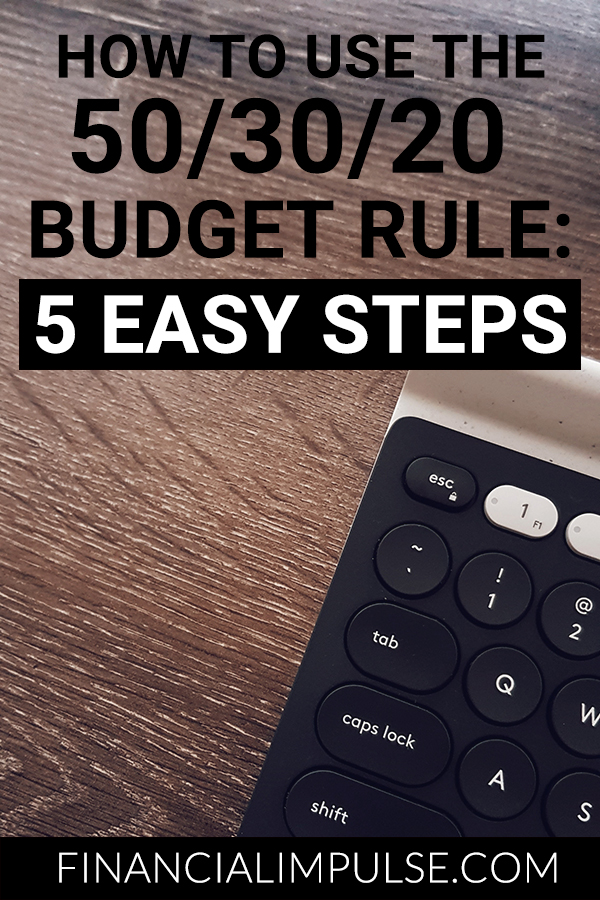Ever hear of the 50/30/20 budget rule? This percentage-based budgeting strategy helps you plan out your finances in just five easy steps.

The first step to reaching any financial goal is to create a plan detailing exactly how you’re going to get there—or in simpler terms, a budget.
Everyone has financial goals, whether it’s buying a car or home, taking a dream vacation, or retiring early. All of these can be accomplished by simply putting a plan in place—but the sad reality is that many people never reach their financial goals because they don’t know how to make and follow a budget.
Budgeting is an important financial skill, and there are a few ways to do it successfully. Below, we’ll cover one of the most simple and effective methods: a percentage-based budget. We’ll also discuss a specific percentage-based plan, the 50/30/20 rule, that you can apply to your own finances.
What is a percentage-based budget?
A percentage-based budget is one of the simplest and easiest ways to budget your money. It’s exactly what the name implies—you base your budget categories around set percentages of your income.
Most people find that percentage-based budgets are easy to implement because they require less tracking than detailed budgets. If you create a budget with set spending amounts for each of its categories, it becomes a burden to closely track every dollar that flows in and out of your accounts. Eventually, you’ll get tired of keeping track and throw your budget out the window. This is typically when people’s finances take a turn for the worse.
Though a percentage-based budget doesn’t track every last cent in great detail, you still need to understand your spending habits to effectively use it. Knowing where and how you spend your money is a critical part of reaching your financial goals.
What is the 50/30/20 budget rule?
The 50/30/20 budgeting method, popularized by Senator Elizabeth Warren, is one of the most common types of percentage-based budgets. It’s a simple way to allocate your income to cover your living expenses while also saving money for short- and long-term goals.
Here are five easy steps for applying the 50/30/20 rule to your own finances.
1. Calculate your after-tax income.
The first step to the 50/30/20 budget rule, or any budgeting method for that matter, is to calculate your after-tax income. This includes all of your income: your salary, side gigs, child-support payments, even the money your rich uncle sends you every month.
Take all of this money, add it up, and then subtract any taxes.
This is easy if your only source of income is from a job you’ve completed a W4 form for, since taxes are taken out before any money reaches your account. However, it may be more difficult if you are self-employed or do freelance work.
Whatever amount you have left after subtracting taxes is your after-tax income. This is the number that the rest of your budget will be based off of, so it’s important for this figure to be accurate.
2. Allocate 50% of your after-tax income to your needs.
Now that you know your after-tax income, take this number and multiply it by 50%.
This number is the amount of money that you can spend on absolute necessities each month. What counts as an “absolute necessity”? These expenses encompass the things that you cannot live without, including:
- rent or mortgage payments
- groceries
- utilities
- medical expenses
- gas or public transportation fees
Note that some needs are debatable and vary depending on your individual circumstances. For instance, you might argue that you could live without a car or some kind of transportation. However, if that transportation gets you to and from work, then it should be considered a necessity.
3. Allocate 30% of your after-tax income to your wants.
Next, multiply your after-tax income by 30%. This number is the amount of money you get to spend on anything other than necessities—what are also known as “discretionary expenses.” This includes expenses like:
- eating out with friends
- going to the movies or other forms of entertainment
- extraneous purchases, like clothing, shoes, and accessories that you don’t need
You can reduce the percentage allocated to this category if your needs overflow beyond 50%—for instance, your breakdown may be 55% for your needs and 25% for your wants. These figures won’t always be 50% and 30%, and that’s okay so long as you aren’t cutting into your savings.
4. Allocate 20% of your after-tax income to your savings.
The remaining 20% of your after-tax income should go to your savings, which can be interpreted in a few ways. It could mean that the money goes:
- directly into your savings account
- toward investments
- toward retirement savings
- toward paying down debt, such a student loan or a car payment
Most importantly, this money is meant to work for you, whether through paying down debt or growing your savings and investments.
If you ever find yourself in a situation where your needs and wants are cutting into this amount allocated for savings, it’s time to rethink your spending habits.
5. Monitor and adjust as needed.
The last step in any budget is to monitor and adjust as needed.
For some people, these percentages simply won’t work.
For example, perhaps you value living in a nice apartment more than going out with friends on the weekend. If that’s the case, you may need to allocate a higher percentage to your needs—say 55% or 60%—to cover your housing costs.
Or maybe you don’t spend much time at home but really enjoy going to the movies and eating out. If so, it’s fine to reallocate some money from your needs category to your wants. Just remember: do not dip into your savings category unless it’s absolutely necessary.
Final Words
Budgeting is key to establishing a strong financial foundation.
At its core, it involves understanding your spending habits and adjusting them to align with your larger financial goals.
For most people, a percentage-based budget, such as the 50/30/20 budgeting method, is the easiest to implement. This budgeting strategy removes the stress of tracking the minutiae of your spending, allowing you to lump expenses into broader categories instead. But ultimately, the type of budget you choose, whether it’s a percentage-based plan or a minimalist budget, doesn’t matter—it just matters that you have one that sticks.
About the Author
Austin Weyenberg, the founder of The Logic of Money, has a passion for finance and helping others. In college, he studied finance, investments, and banking as well as real estate and urban land economics. Austin strives to share his knowledge and tips to make personal finance less stressful for everyone.





